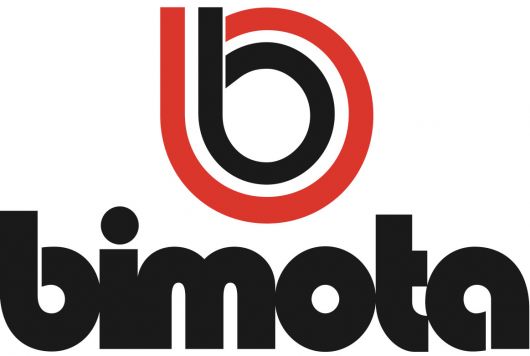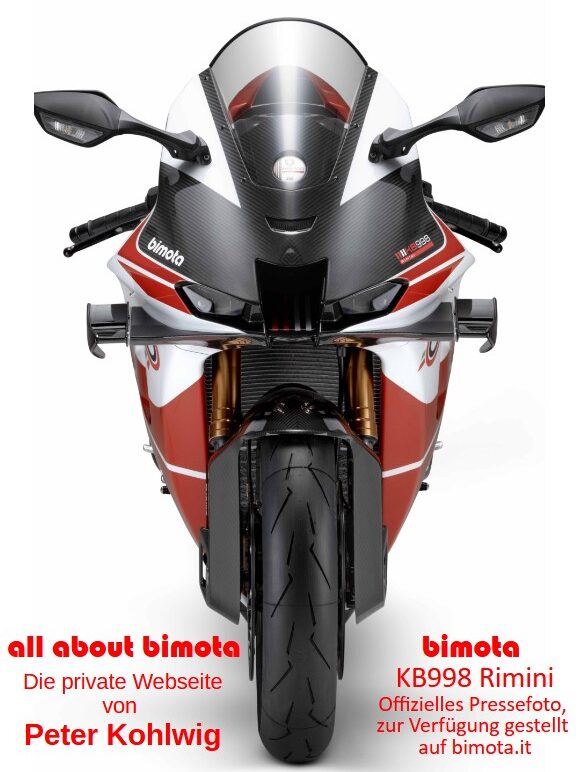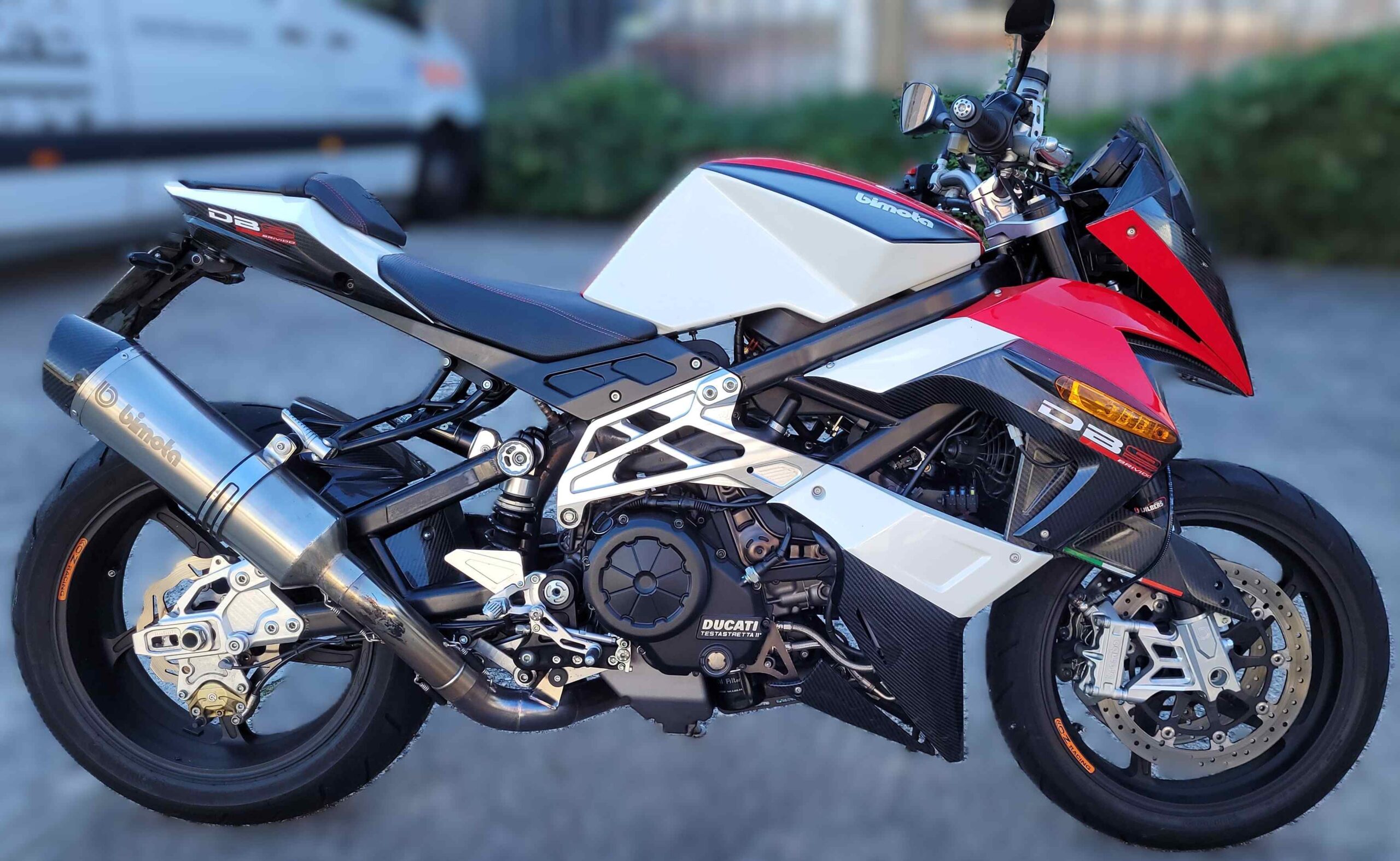
| Designer | Enrico Borgesan | Premiere | Milan 2012 |
| Production period | 2012 – 2016 | Production numbers | 47 |
| Power | 118 KW (162 PS) | Displacement | 1.198 ccm |
| Topspeed | 270 km/h | Weight | wet 194 kg dry 178 kg |
| Price | 29.900 Euro (2012) | Colours | red / white / blck carbon |
| Techncal basis | Ducati 1198 |
With the DB9 Brivido (Italian for „thrill“), Bimota presents a third largely unfaired model based on the DB7. The two-seater Brivido, with its small fairing, belly pan, and high handlebars, is marketed by Bimota as a café racer.
Compared to the DB7, the steering head geometry is slightly modified, increasing the trail by 5 mm. The chassis components remain the same as those known from the DB7 and DB8: a Brembo braking system, OZ forged wheels, a 43 mm Marzocchi fork, and an Extreme Tech shock absorber.
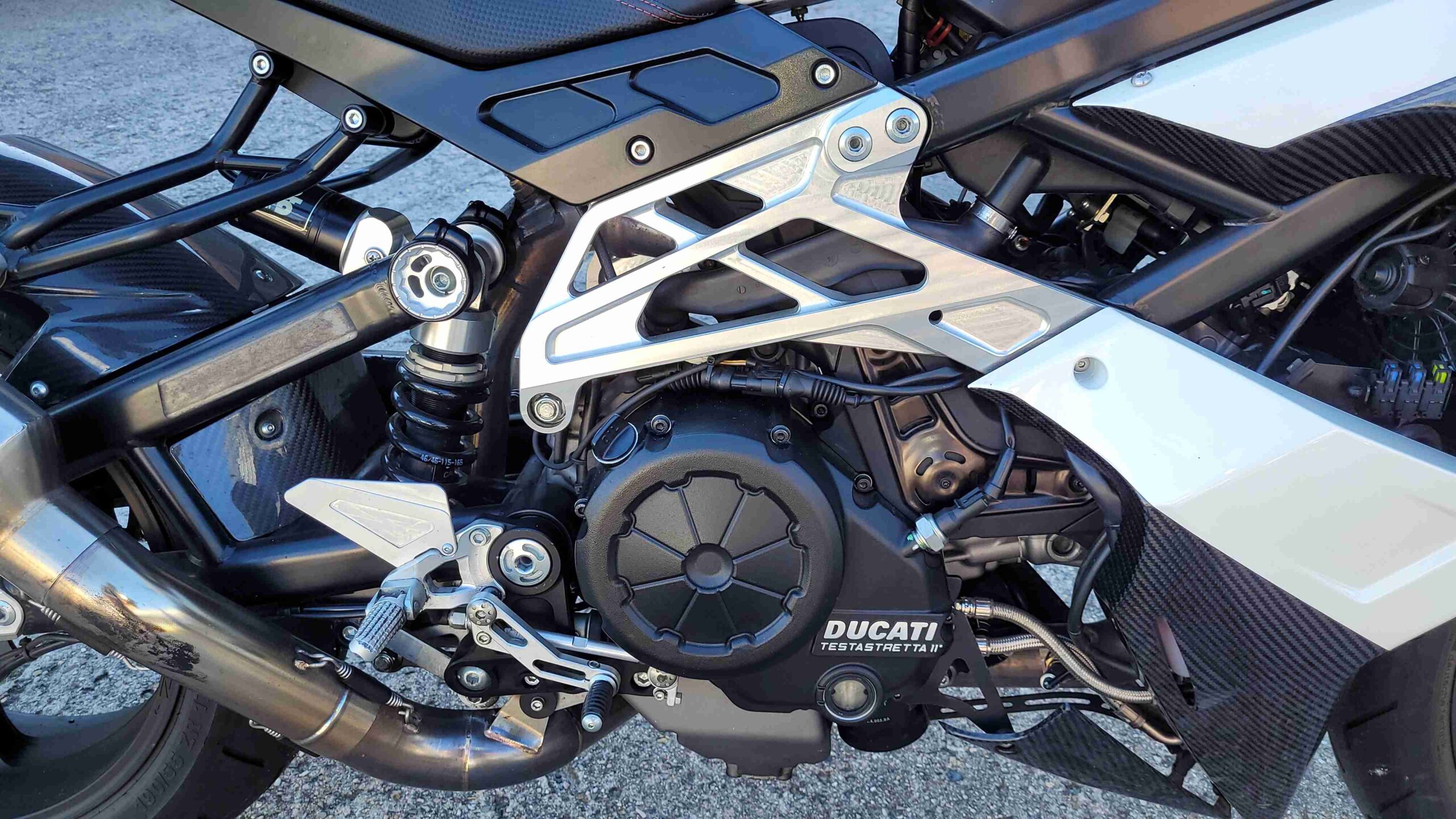
In addition to the standard DB9, Bimota offers the DB9 S. Technically, the S differs by featuring a single rim-mounted monobrake disc with a 340 mm inner diameter, reducing the unsprung mass at the front wheel. However, in a comparison test against the Aprilia RSV4 Carbonero on the Nürburgring Nordschleife, published by PS magazine in issue 6/2012, this braking system fails to impress:
„What’s really strange, however, is the brake on our test bike, identified by the SC suffix, which refers to the single rim-mounted brake disc with an internally clamping caliper. This setup costs an additional €3,150 compared to the ‘normal’ version with two Brembo four-piston calipers and 320 mm discs. The brakes on our test bike turned out to be somewhat dull and vague in terms of modulation.“
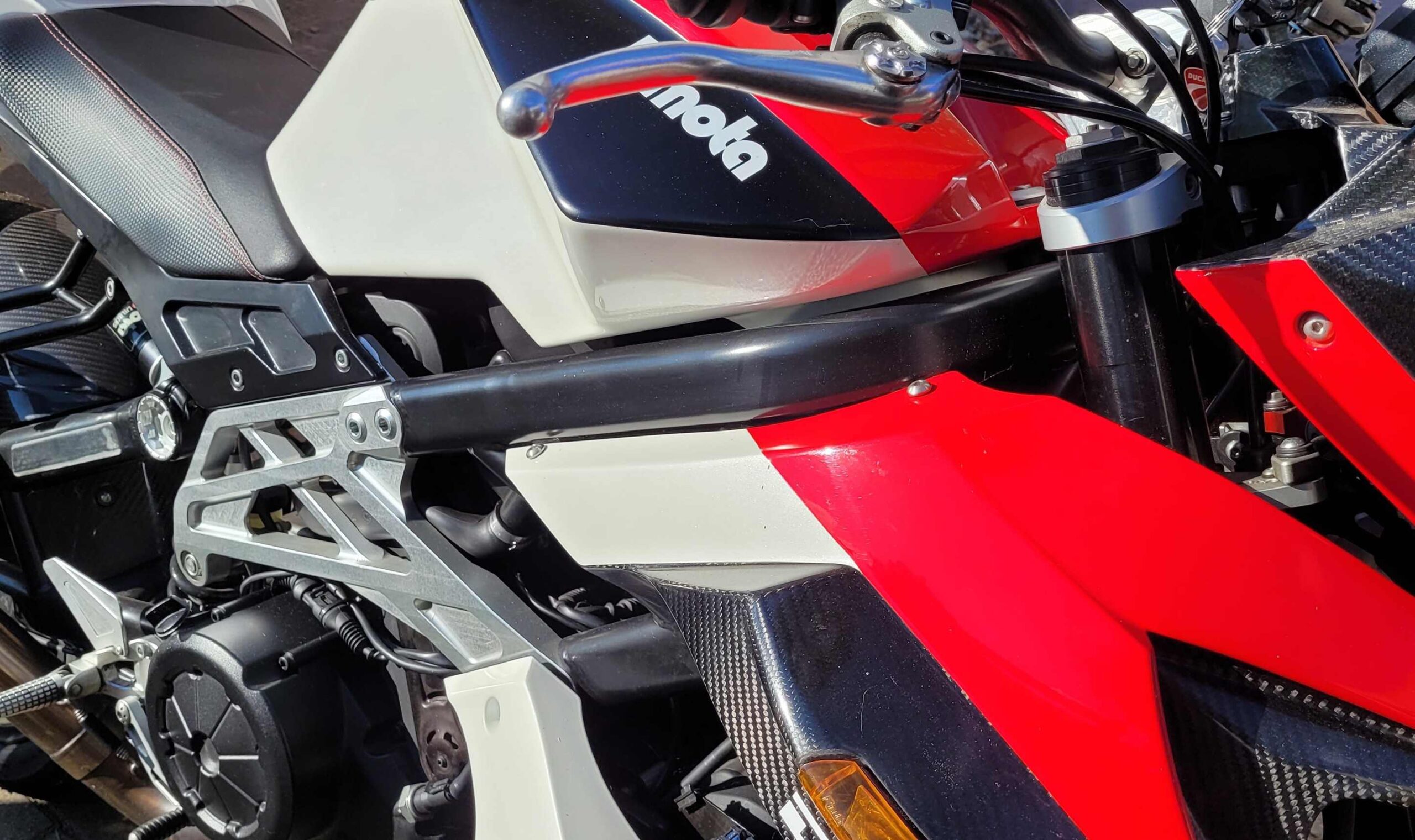
The feedback on the tuning of the 1198 Testastretta Evoluzione engine from the Ducati Diavel is also not entirely positive. Compared to the Ducati 1198 engine used in the DB8, the Diavel’s motor is tuned for higher torque at the cost of peak power. In a second test by PS magazine in issue 2/2014, the tester observes poor throttle response below 4,000 rpm, leading to a mixed verdict:
„With a measured 151 hp, the Rimini bike rockets like the devil and launches its rider into seventh heaven. However, the engine only accepts full throttle from 4,000 rpm onwards, and below that mark, the Bimota DB9 Brivido S sometimes violently lashes its chain. Additionally, it responds quite abruptly to throttle input, requiring a delicate touch when accelerating out of slow corners. But once past that, the twin rewards the rider with an incredible smoothness and elasticity that is hard to match. Ultimately, this V2 is a fantastic feel-good road engine with breathtaking performance between 4,500 and 8,500 rpm.“
However, when it comes to the chassis, the tester has only positive things to say:
„On the other hand, Bimotas almost always enchant with their exceptional riding dynamics, as the DB9 Brivido S chassis impressively demonstrates: The Italian, weighing just 197 kg fully fueled, turns into corners wonderfully easily, very neutrally, and with extreme precision, maintaining extraordinary stability throughout.“
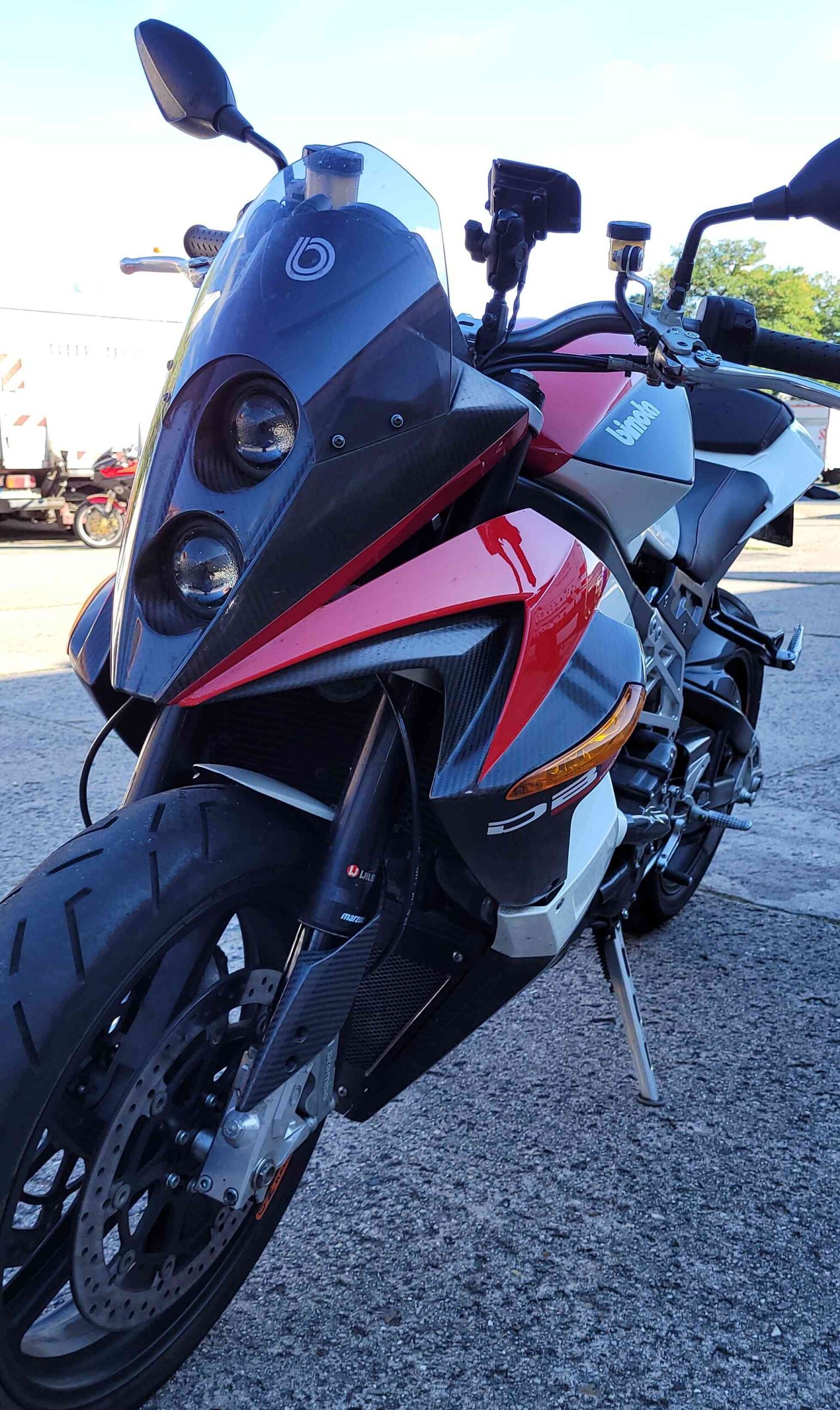
Of the 47 DB9 units produced, 36 were the standard variant, while 11 were the DB9 S, which was equipped with a single 362 mm rim-mounted brake disc from BCA. Both versions were available in a red-white-black paint scheme or in an unpainted version with a visible carbon fiber structure.
